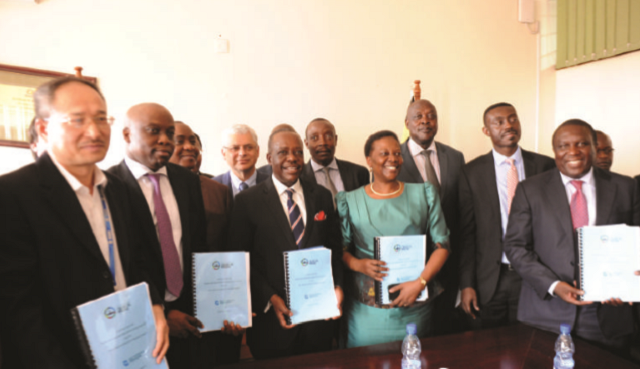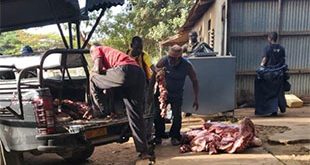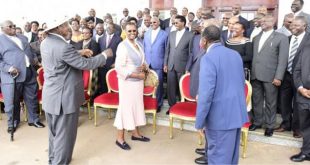
Tanzania urges speed as study starts on 1450km export pipeline
Excitement on Jan.9 filled the boardroom on the fourth floor of Amber House, the headquarters of the Ministry of Energy and Mineral Development in Kampala, as high ranking officials of the governments of Uganda, Tanzania alongside three oil firms jointly launched the Front End Engineering Design (FEED) study for Uganda’s oil export pipeline.
FEED is basic engineering which follows the conceptual design or feasibility study and is used as the basis for bidding during the engineering, procurement and construction phase.
This study follows government’s decision to choose the Hoima-Tanga pipeline route as the best option citing least tariffs to transporting the crude to the coast for export, last year.
The pipeline is to traverse about 1450km from Hoima in western Uganda to the Tanzania port of Tanga on the Indian Ocean coast.
The route is expected to start at Kabaale and meander southwards through the districts of Mubende, Ssembabule, Lyantonde, and Rakai.
The pipeline, which is expected to transport 230,000 barrels of crude oil per day to Tanga for shipment to the international market will then skirt around Lake Victoria and enter northwestern Tanzania at a place called Nyamirembe, move in the Southeastern direction through Chato, Bwanga, Bukombe, Ibolongero, Iguguno, Chemba, Kijungu, Segera before terminating at Mabokweni in Tanga where a marine terminal will be sheltered.
Jean-Luc Bruggeman, the Total E&P midstream project director, whose firm is taking the lead in the development of the pipeline, said the FEED study will among others come up with locations for eight pressure reading sites along the pipeline route, studies on fibre optic cables and high voltage power lines. The study will also narrow down the pipeline corridor from about 2km to about 30metres.
The study is to be carried out by the US-based Gulf Interstate Engineering (GIE) at a cost of $11.5 million with the view to develop the East African Crude Oil Pipeline (EACOP) project basic engineering designs and form a basis for the partner’s final investment decision.
It will involve a multiple team of up to 85 engineers and other relevant discipline specialists who will be tasked with carrying out the basic engineering design.
Eng. Irene Muloni, the Energy and Mineral Development minister said the government expects the study to be completed around August and it will come up with the actual cost of the pipeline currently estimated at $3.55 billion.
“We want to access the international market and that access can only be possible through export of this crude through a pipeline,” she said.
The pre-final investment process including FEED, the environmental and social impact assessment, and the resettlement action plan will be handled concurrently. All these studies are expected to influence the final tariff and the date which the pipeline will be up and running.
The government is also looking at fast tracking all the projects in the government’s quest to produce oil by 2020.
Asked about the refinery, Muloni told The Independent that the government is in the process of getting a lead investor by the end of March.
“We are also looking at 2020 to have the oil refinery ready” she said, adding that the government is at the moment looking at a list of 33 potential firms for a serious investor with financial muscle, technical know-how, and experience to construct and operate a refinery.
Currently, Uganda and Tanzania are negotiating an intergovernmental agreement that will be scrutinized by Parliament. The two governments are also holding discussions over a harmonized fiscal regime.
Prof. Sospeter Muhongo, the minister of Energy and Minerals of Tanzania said land negotiations in his country are quite straight forward since land belongs to government and it is under the custodianship of the Presidency.
The biggest portion of the pipeline is on the Tanzanian side and Muhongo said the speed of the project implementation needs to improve.
“We in Tanzania are not new to pipelines,” he said, “We may claim to be a country of pipelines in East Africa. Tanzania and Zambia worked on a 1,700km long pipeline from Dar-es Salam to Ndola in the early 1970s.”
Tanzania recently finished construction of various pipeline projects including a 215km gas pipeline from Songo Songo to Dar es Salam and a 542km pipeline from Mtwara to Dar es Salam for transmitting natural gas.
****
editor@independent.co.ug
 The Independent Uganda: You get the Truth we Pay the Price
The Independent Uganda: You get the Truth we Pay the Price



